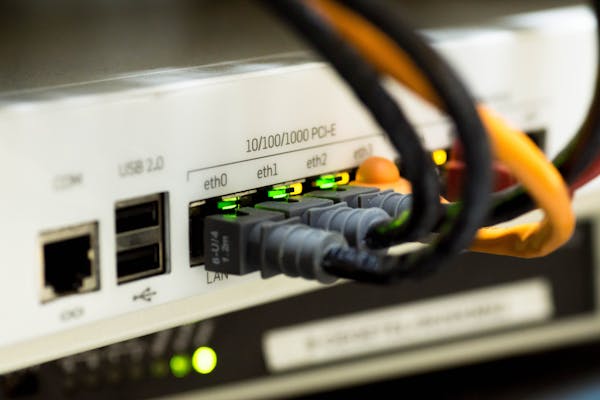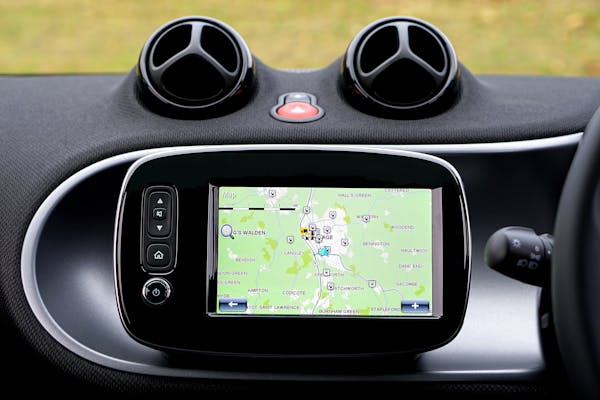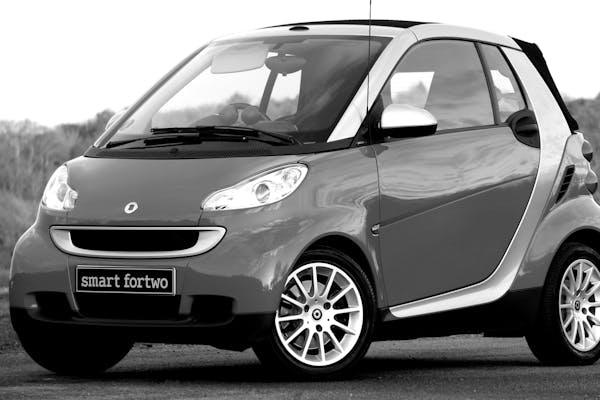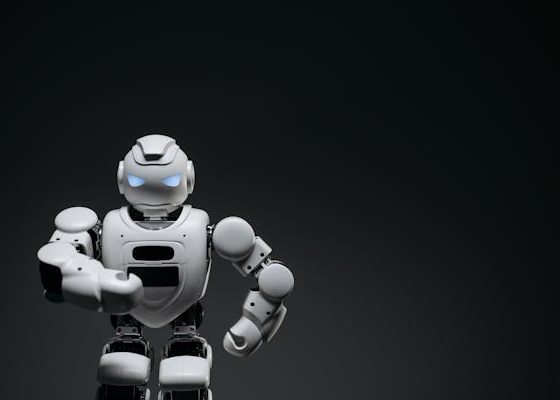
The rapid advancement of technology has given rise to numerous innovations, one of the most impactful being the Internet of Things (IoT). IoT is a network of interconnected devices that communicate and exchange data with each other through the internet. This technology has revolutionized various sectors by enabling smarter, more efficient, and highly responsive systems. The applications of Internet of Things span across different domains, including healthcare, agriculture, manufacturing, smart cities, and more. This article delves into the diverse and transformative applications of Internet of Things.
Explore The Applications of Internet of Things
1. Healthcare: Enhancing Patient Care and Medical Management
The healthcare industry has witnessed a significant transformation with the integration of IoT. Applications of Internet of Things in healthcare are diverse and have the potential to save lives and improve patient care. IoT devices like wearable fitness trackers, smartwatches, and connected medical devices monitor patients’ health in real-time, providing critical data to healthcare professionals.
Remote Monitoring: IoT enables remote patient monitoring, allowing doctors to track patients’ vital signs from afar. Devices like heart rate monitors, glucose meters, and blood pressure monitors transmit data to healthcare providers, ensuring timely interventions.
Chronic Disease Management: For patients with chronic conditions, IoT devices offer continuous monitoring and management. For instance, smart inhalers help asthma patients manage their condition by tracking usage and providing reminders.
Elderly Care: IoT applications are particularly beneficial in elderly care. Smart home systems equipped with sensors can monitor the movements and health of elderly individuals, alerting caregivers in case of falls or other emergencies.
Medication Adherence: IoT-enabled smart pillboxes remind patients to take their medications on time and monitor adherence, ensuring better health outcomes.
2. Agriculture: Revolutionizing Farming Practices
The agricultural sector has also embraced IoT, leading to the emergence of smart farming. Applications of Internet of Things in agriculture help farmers optimize the use of resources, enhance productivity, and reduce environmental impact.
Precision Farming: IoT devices like soil sensors, weather stations, and drones collect data on soil moisture, nutrient levels, and weather conditions. This data enables precision farming, where farmers can make informed decisions about irrigation, fertilization, and pest control.
Livestock Monitoring: IoT applications extend to livestock management. Wearable devices on animals monitor their health, track their location, and even provide insights into their behavior. This information helps farmers detect illnesses early and manage their herds more efficiently.
Automated Irrigation Systems: Smart irrigation systems use IoT sensors to monitor soil moisture and weather conditions. These systems can automatically adjust watering schedules, conserving water and ensuring crops receive optimal hydration.
Supply Chain Optimization: IoT enhances supply chain management in agriculture. Sensors and GPS devices track the transportation of produce, ensuring freshness and reducing waste by monitoring conditions during transit.
3. Manufacturing: Driving Efficiency and Innovation

The manufacturing industry has seen substantial improvements in efficiency and innovation due to the applications of Internet of Things. IoT technologies facilitate the creation of smart factories, where machines and systems are interconnected, enhancing productivity and reducing downtime.
Predictive Maintenance: IoT sensors on machinery collect data on performance and wear and tear. Predictive maintenance uses this data to forecast when equipment is likely to fail, allowing for timely repairs and reducing costly downtime.
Asset Tracking: IoT enables real-time tracking of assets and inventory within manufacturing facilities. This ensures efficient resource utilization and prevents losses due to misplaced items.
Quality Control: IoT applications in quality control include sensors that monitor production processes and detect defects in real-time. This leads to higher product quality and reduces waste.
Energy Management: Smart energy management systems use IoT devices to monitor and control energy consumption in manufacturing plants. This not only reduces costs but also minimizes the environmental footprint.
4. Smart Cities: Creating Sustainable Urban Environments
The concept of smart cities is becoming a reality, thanks to the applications of Internet of Things. IoT technologies are instrumental in addressing urban challenges, improving the quality of life for residents, and making cities more sustainable.
Traffic Management: IoT-powered traffic management systems use sensors and cameras to monitor traffic flow in real-time. This data is used to optimize traffic signals, reduce congestion, and improve road safety.
Smart Lighting: Streetlights equipped with IoT sensors can adjust their brightness based on the presence of pedestrians or vehicles. This reduces energy consumption and enhances public safety.
Waste Management: IoT applications in waste management include smart bins that monitor fill levels and optimize collection routes. This ensures timely waste disposal and reduces operational costs.
Air Quality Monitoring: IoT sensors placed around cities monitor air quality, providing data that can be used to address pollution sources and improve public health.
Public Safety: Smart surveillance systems use IoT cameras and sensors to enhance public safety. These systems can detect unusual activities and alert authorities in real-time.
5. Home Automation: Enhancing Comfort and Convenience
Home automation is one of the most popular applications of Internet of Things, transforming ordinary homes into smart homes. IoT devices in home automation provide enhanced comfort, security, and energy efficiency.
Smart Thermostats: IoT-enabled thermostats learn homeowners’ preferences and adjust heating and cooling settings automatically. This leads to energy savings and increased comfort.
Security Systems: Smart security systems use IoT cameras, sensors, and alarms to monitor homes. These systems can be controlled remotely, providing real-time alerts and enhancing security.
Home Appliances: IoT applications extend to home appliances like smart refrigerators, washing machines, and ovens. These devices can be controlled remotely, offer usage insights, and even perform tasks autonomously.
Lighting Control: Smart lighting systems allow homeowners to control lights remotely, set schedules, and adjust brightness. This improves energy efficiency and provides convenience.
Voice Assistants: Devices like Amazon Echo and Google Home use IoT technology to control various smart home devices through voice commands, making daily tasks easier and more efficient.
6. Transportation: Revolutionizing Mobility

The transportation sector is undergoing a transformation with the applications of Internet of Things. IoT technologies are enhancing vehicle safety, improving fleet management, and paving the way for autonomous vehicles.
Connected Vehicles: IoT enables vehicles to communicate with each other and with infrastructure. This connectivity enhances road safety by providing real-time traffic information, collision warnings, and route optimization.
Fleet Management: IoT applications in fleet management include GPS tracking, vehicle diagnostics, and driver behavior monitoring. This leads to improved operational efficiency and reduced costs.
Autonomous Vehicles: Self-driving cars rely heavily on IoT sensors and communication systems. These vehicles use data from various sensors to navigate, avoid obstacles, and make informed decisions.
Public Transportation: IoT enhances public transportation systems by providing real-time information on schedules, delays, and passenger loads. This improves the overall efficiency and user experience.
Logistics and Delivery: IoT applications in logistics include real-time tracking of shipments, condition monitoring, and route optimization. This ensures timely deliveries and reduces operational costs.
7. Retail: Transforming the Shopping Experience
The retail industry is leveraging the applications of Internet of Things to enhance the shopping experience, streamline operations, and improve inventory management.
Smart Shelves: IoT-enabled smart shelves use weight sensors and RFID tags to monitor inventory levels in real-time. This ensures timely restocking and reduces stockouts.
Personalized Shopping: IoT devices like beacons and smart mirrors provide personalized shopping experiences. Beacons can send targeted promotions to customers’ smartphones, while smart mirrors allow virtual try-ons.
Supply Chain Management: IoT improves supply chain visibility by tracking products from manufacturing to the retail shelf. This reduces losses and ensures product quality.
In-Store Analytics: IoT applications in in-store analytics use sensors to monitor customer behavior, foot traffic, and preferences. This data helps retailers optimize store layouts and improve customer service.
Automated Checkout: IoT-enabled self-checkout systems and smart shopping carts streamline the checkout process, reducing wait times and enhancing convenience.
8. Energy Management: Optimizing Resource Utilization
Energy management is another critical area where the applications of Internet of Things are making a significant impact. IoT technologies help monitor and optimize energy consumption, leading to cost savings and environmental benefits.
Smart Grids: IoT-powered smart grids enable real-time monitoring and management of electricity distribution. This leads to efficient energy usage and reduces the risk of blackouts.
Renewable Energy Integration: IoT applications facilitate the integration of renewable energy sources like solar and wind into the grid. Sensors monitor energy production and consumption, ensuring a balanced supply.
Building Management Systems: IoT-enabled building management systems monitor and control heating, ventilation, and air conditioning (HVAC), lighting, and security systems. This improves energy efficiency and reduces operational costs.
Energy Consumption Monitoring: Smart meters and IoT sensors provide real-time data on energy consumption. This helps consumers and businesses identify areas for improvement and reduce energy bills.
9. Environmental Monitoring: Protecting Natural Resources
The applications of Internet of Things extend to environmental monitoring, where IoT technologies help protect natural resources and address environmental challenges.
Water Quality Monitoring: IoT sensors monitor water quality in rivers, lakes, and oceans. This data helps detect pollution sources and ensures the safety of drinking water.
Wildlife Tracking: IoT devices like GPS collars and sensors track wildlife movements and behavior. This information is crucial for conservation efforts and protecting endangered species.
Air Quality Monitoring: IoT applications in air quality monitoring provide real-time data on pollution levels. This information helps authorities take corrective actions to improve air quality.
Climate Change Monitoring: IoT sensors collect data on temperature, humidity, and other climate parameters. This data is essential for understanding and mitigating the impacts of climate change.
10. Industrial IoT: Transforming Industries
Industrial IoT (IIoT) is a subset of IoT that focuses on the industrial sector. IIoT applications enhance operational efficiency, safety, and productivity in industries like manufacturing, oil and gas, and mining.
Condition Monitoring: IoT sensors monitor the condition of industrial equipment, detecting issues before they lead to failures. This ensures timely maintenance and reduces downtime.
Safety Management: IoT applications in safety management include wearable devices that monitor workers’ health and safety. These devices can detect hazardous conditions and alert workers in real-time.
Supply Chain Optimization: IIoT enhances supply chain visibility by tracking the movement and condition of raw materials and finished products. This improves efficiency and reduces costs.
Remote Operations: IoT enables remote monitoring and control of industrial processes. This is particularly useful in hazardous environments, where human intervention is risky.
Energy Management: IIoT applications in energy management monitor and optimize energy consumption in industrial facilities. This reduces costs and minimizes environmental impact.
Conclusion:
The applications of Internet of Things are vast and varied, impacting numerous sectors and transforming the way we live and work. From healthcare and agriculture to manufacturing and smart cities, IoT technologies are enhancing efficiency, improving quality of life, and promoting sustainability. As IoT continues to evolve, its potential to drive innovation and create new opportunities is limitless. Embracing IoT applications can lead to significant advancements and benefits across different domains, paving the way for a smarter and more connected world.



